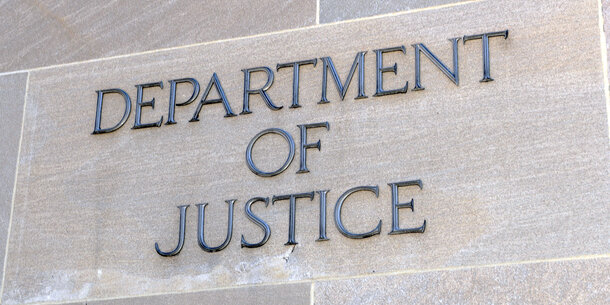Update: On December 23, President Biden granted commutations to 37 of the 40 people on federal death row.
President-elect Donald Trump has vowed to bring back and expand federal use of the death penalty. In response, advocates are calling on President Biden to commute the sentences of the 40 individuals currently on federal death row to life without parole.
In July 2020, Trump’s administration carried out the first federal execution in 17 years. Over the following six months, it executed 13 people — three times as many as the federal government had executed in the previous six decades.
Critics across the political spectrum raised pointed questions about the fairness and legality of this rash of executions. In July 2021, Attorney General Merrick Garland imposed a moratorium on federal executions, noting the arbitrary application, racial disparities, and number of exonerations in capital cases. The order halted new executions pending a review of Trump-era policies that would further expedite them. The legal and moral concerns raised about those policies remain unresolved, meaning there is no barrier to the next Department of Justice pursuing capital cases under these same controversial procedures.
As Biden weighs the requests for clemency, here are four things to know about the federal death penalty.
The federal death penalty is unevenly applied.
The federal government can seek death sentences for certain federal crimes in any state. However, factors such as geography, race, and legal representation influence who receives death sentences as much as the underlying crimes. Between 1988 — when the modern federal death penalty was instituted — and the 2021 moratorium, nearly half of all federal death sentences and 10 of the 16 people executed for federal crimes came from just three states: Missouri, Texas, and Virginia. Approximately two-thirds of current federal death sentences were imposed in only 3 of the 12 judicial circuits.
From 1989 to June 2024, 73 percent of people tried in cases authorized for federal capital punishment and 60 percent of those federally sentenced to death were people of color. Hispanic people were 2.3 times more likely to face the death penalty than white people, according to a 2000 study. In Texas, Black people in federal trials are 16 times more likely to be sentenced to death than non-Black people.
Access to high-quality defense also affects who receives capital sentences. A 2010 study for the U.S. Judicial Conference found that the likelihood of receiving a federal death sentence was inversely correlated to the number of hours defense attorneys spent on investigation and preparation. Jurisdictions with historically the most active death penalties also generally expend fewer resources on federal capital defense.
Even though supposedly protected, people with severe intellectual disabilities and mental illness are still at risk of federal execution.
The Supreme Court has ruled that executing people with intellectual disabilities or severe mental illness is unconstitutional. But data shows that approximately 85 percent of individuals on federal death row have at least one serious mental impairment, and 63 percent have more than one.
Those executed reflect this reality. Corey Johnson, executed in January 2021, had a severe intellectual disability. He was unable to read beyond an elementary level or live on his own. Lisa Montgomery, also executed in January 2021, suffered from mental illness resulting from decades of horrific violence, including being sexually trafficked by her mother. Three experts found her “so divorced from reality that she cannot rationally understand the government’s rationale for her execution.” Wesley Purkey, executed in July 2020, suffered from schizophrenia and Alzheimer’s disease, as well as brain damage stemming from a violent childhood, which left him unable to understand the basis for his execution.
All three were executed with important questions about their capacity unresolved. Even when lower courts stayed executions to explore their claims, the Supreme Court intervened, sometimes even bypassing the usual appellate review.
The lethal injection used for federal executions is not humane.
The use of the federal death penalty was halted by court order in 2006 pending litigation about whether the drug combination used for federal lethal injections inflicted “unnecessary and savage pain.” In July 2019, Bill Barr, Trump’s attorney general, announced that the government was switching from that drug combination to a single drug, pentobarbital. Ignoring the usual practice of waiting for postconviction litigation to be resolved before setting execution dates, the government also scheduled five executions.
But pentobarbital is not necessarily more humane. Like the previous drug combination, it can cause flash pulmonary edema, in which a person’s lungs fill with fluid while they are still alive, causing terror and pain. Despite its effects being well documented, the drug did not undergo comprehensive legal or regulatory review before being used for federal executions.
Shortly after the announcement of the new drug and the execution dates, multiple people facing execution filed petitions challenging its use. A federal trial court temporarily halted the executions to allow full consideration of these claims, finding that the “scientific evidence . . . overwhelmingly indicates” that the execution method will “very likely cause [the defendants] extreme pain and needless suffering.” The court of appeals agreed, noting “novel and difficult constitutional questions” that required more judicial review. In an unsigned opinion, however, and over the objections of Justices Stephen Breyer, Ruth Bader Ginsburg, Elena Kagan, and Sonia Sotomayor, the Supreme Court lifted the stay and allowed the executions to proceed.
Separately, the same district court halted the executions of Corey Johnson and Dustin Higgs, who had been infected with Covid-19. The court agreed that the lung damage from the virus would exacerbate and prolong the pain of lethal injection. Again, higher courts intervened, disregarding the lower court’s fact-finding, and ordered the executions to proceed.
According to one expert, a preliminary autopsy confirmed with “virtual medical certainty” that Wesley Purkey, who was executed via pentobarbital in July 2020, experienced excruciating pain and flash pulmonary edema. A 2020 NPR review of over 200 autopsies from executions across nine states found that 84 percent of those executed with pentobarbital experienced pulmonary edema, with nearly half exhibiting froth or foam in the lungs, indicating that they were not paralyzed, but instead fighting to breathe.
The federal death penalty review process does not sufficiently protect against miscarriages of justice.
Since 1973, at least 200 people sentenced to death nationwide have been exonerated. Although these exonerations have happened in state rather than federal capital cases to date, federal capital review procedures do not necessarily provide adequate guarantees against such tragedies. In her dissent in the most recent of the 13 death penalty cases, Sotomayor decried the ways the Supreme Court “allowed the United States to execute thirteen people in six months under a statutory scheme and regulatory protocol that have received inadequate scrutiny, without resolving the serious claims the condemned individuals raised.”
The Department of Justice uses an internal review process prior to approving a federal capital prosecution. After trial and sentencing, death penalty cases undergo judicial review. Notably, people convicted in state courts can pursue some claims federally after exhausting their state appeals. This layer of federal review can provide them with access to new lawyers, new judges, and additional investigative opportunities. Federal capital defendants, however, have only federal review processes available, which often return, in the initial stages, to the original trial judge. These systems of review are not foolproof, and people have been executed despite credible claims of racial bias, trial error, and government misconduct.
For instance, Orlando Hall, who was convicted and sentenced by an all-white jury in Texas, learned afterward that the main prosecutor involved in jury selection had a history of unconstitutionally excluding prospective Black jurors. Hall was executed in 2020 without being able to fully investigate this issue.
Lezmond Mitchell was convicted of a 2001 crime involving Navajo Nation members on tribal land, which ordinarily would mean the death penalty could only be applied with tribal consent. His trial was moved 200 miles to Phoenix, Arizona, where only 2 percent of the population is Native American. Mitchell was executed in August 2020 over the objections of the Navajo Nation, the U.S. Attorney’s Office, and some victims’ relatives.
Brandon Bernard, convicted of a crime he committed at age 18, learned after his conviction that the government may have withheld exculpatory evidence and knowingly presented false testimony. Five surviving jurors, the original prosecutor, and the former prison warden opposed his 2020 execution.
Daniel Lee, who received a death sentence in 1999 while his more culpable codefendant did not, was executed in July 2020 over the objections of the original prosecutor, trial judge, and some victims’ relatives.
• • •
The 40 people currently on federal death row have all been convicted of heinous crimes. But their cases also reflect concerns about racial disparities and geographic inequities. They present unanswered questions about the legality and fairness of the process, the inhumanity of the punishment, and potentially even culpability. While 40 may not seem like a large number, the federal system sets a national example that can impact the over 2,000 people on death row around the country.
There is little reason to think that the federal judiciary will adequately step in to protect against government misconduct or overreach, prevent constitutional violations, or even fully consider significant legal questions that affect the rights — and the lives — of those at the system’s mercy. Now only President Biden can prevent executions under these circumstances, by commuting the death sentences to life imprisonment. He has until January 20 to do so.




